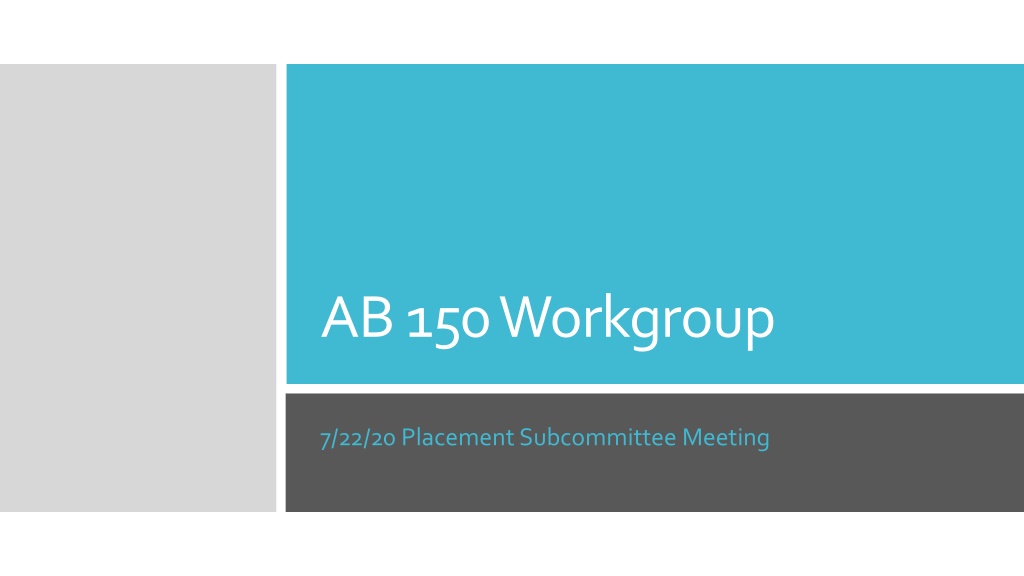
Crafting Policy for Youth Placement in Foster Care
Explore key considerations and potential strategies for improving outcomes in youth placement within the foster care system, including options for extended foster care programs. Discussion topics cover maintaining current programs, developing supervised independent living settings, and the role of federally funded transitional housing models.
Download Presentation

Please find below an Image/Link to download the presentation.
The content on the website is provided AS IS for your information and personal use only. It may not be sold, licensed, or shared on other websites without obtaining consent from the author. Download presentation by click this link. If you encounter any issues during the download, it is possible that the publisher has removed the file from their server.
E N D
Presentation Transcript
AB 150 Workgroup 7/22/20 Placement Subcommittee Meeting
Todays Agenda 12:00 12:05: Welcome, Agenda 12:05 12:25: Review Q&A Document 12:25 12:55: Group Discussion 12:55 1:00:Next Steps
Nevada does have the option to maintain its current programs while simultaneously operating a IV-E extended foster care program Federally funded Guardianship and Adoption Assistance payments can continue to age 21 under Fostering Connections Title IV-E matching rates are 50% for maintenance payments, 50% for administration, and 75% for training Fostering Connections provides the flexibility to extend Chaffee funded services to age 23, but no additional funds Review of Q&A Document - Finance
a title IV-E agency has the discretion to develop a range of supervised independent living settings which can be reasonably interpreted as consistent with the law, including whether or not such settings need to be licensed and any safety protocols that may be needed. Review of Q&A Document - Placement Some states use a readiness assessment or validated assessment tool as part of the process of approving independent living settings, but these are not the sole determining factor in approving a placement The state may issues payments directly to participating young people, and may split the payment between the youth and a 3rdparty
Placement in other states: Significant proportion of youth choose Supervised Independent Living very similar to current offering under VolJUR/FAFFY Most implementing states have chosen to develop federally funded transitional housing models Youth participating in extended foster care have a say in their placement through team meetings and court Review of Q&A Document - Placement
Group Discussion What are the key considerations in crafting policy regarding placement for youth 18 21?
Group Discussion Would opting into IV-E extended foster care allow for new strategies to improve outcomes for youth aging out of foster care?
Group Discussion What strategies would improve outcomes for youth aging out of foster care if we did NOT opt into IV-E extended foster care?
Group Discussion How do we address the variation in capacity and placement availability across jurisdictions?
Submit recommendations by email to ab150@dcfs.nv.gov by 12 PM on Monday July 27 Mon. 27 July, 12:00 PM Proposed Next Steps Wed. 5 Aug. Consolidated recommendations and preliminary fiscal assessment to be presented at next workgroup meeting Wednesday August 5
